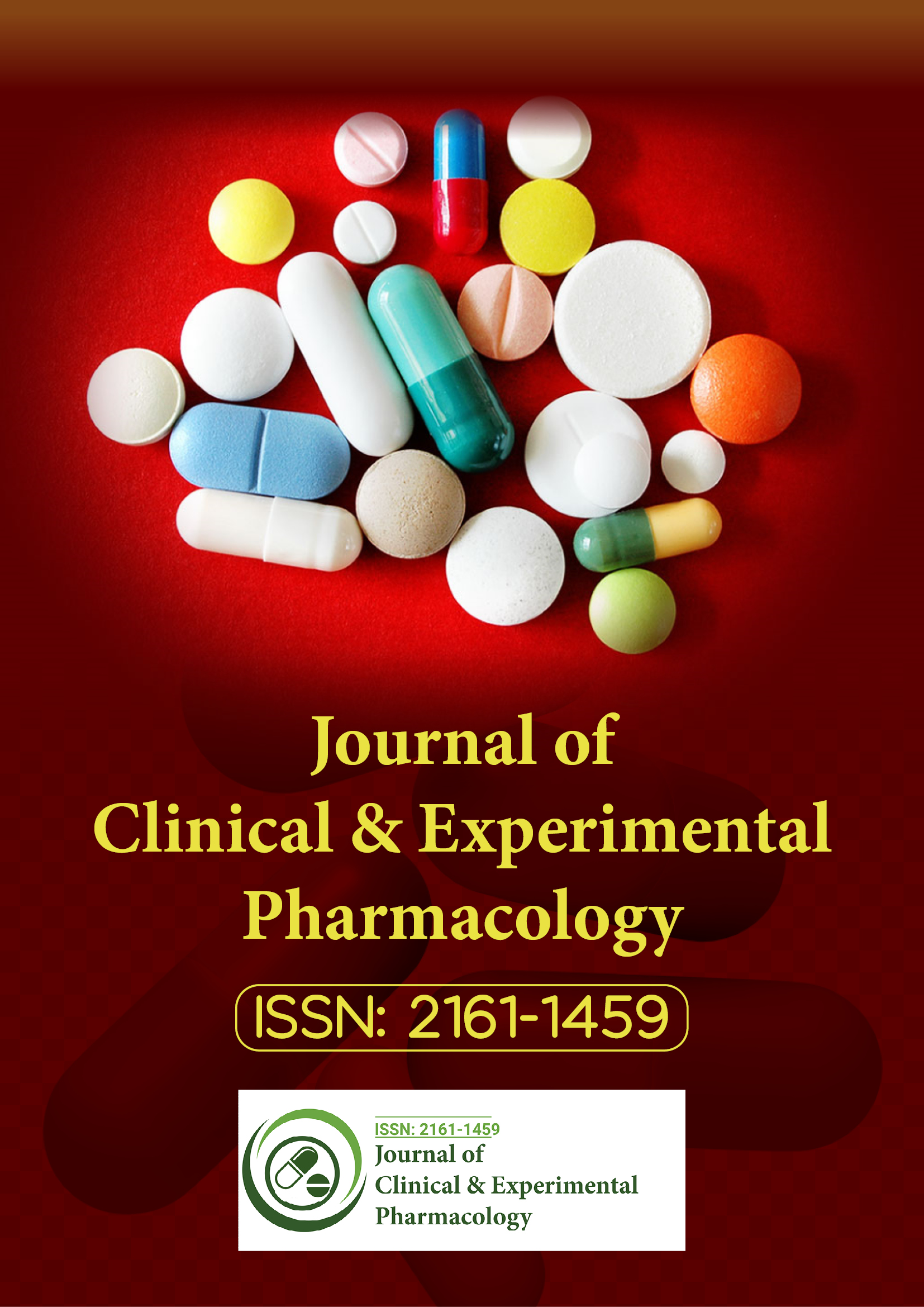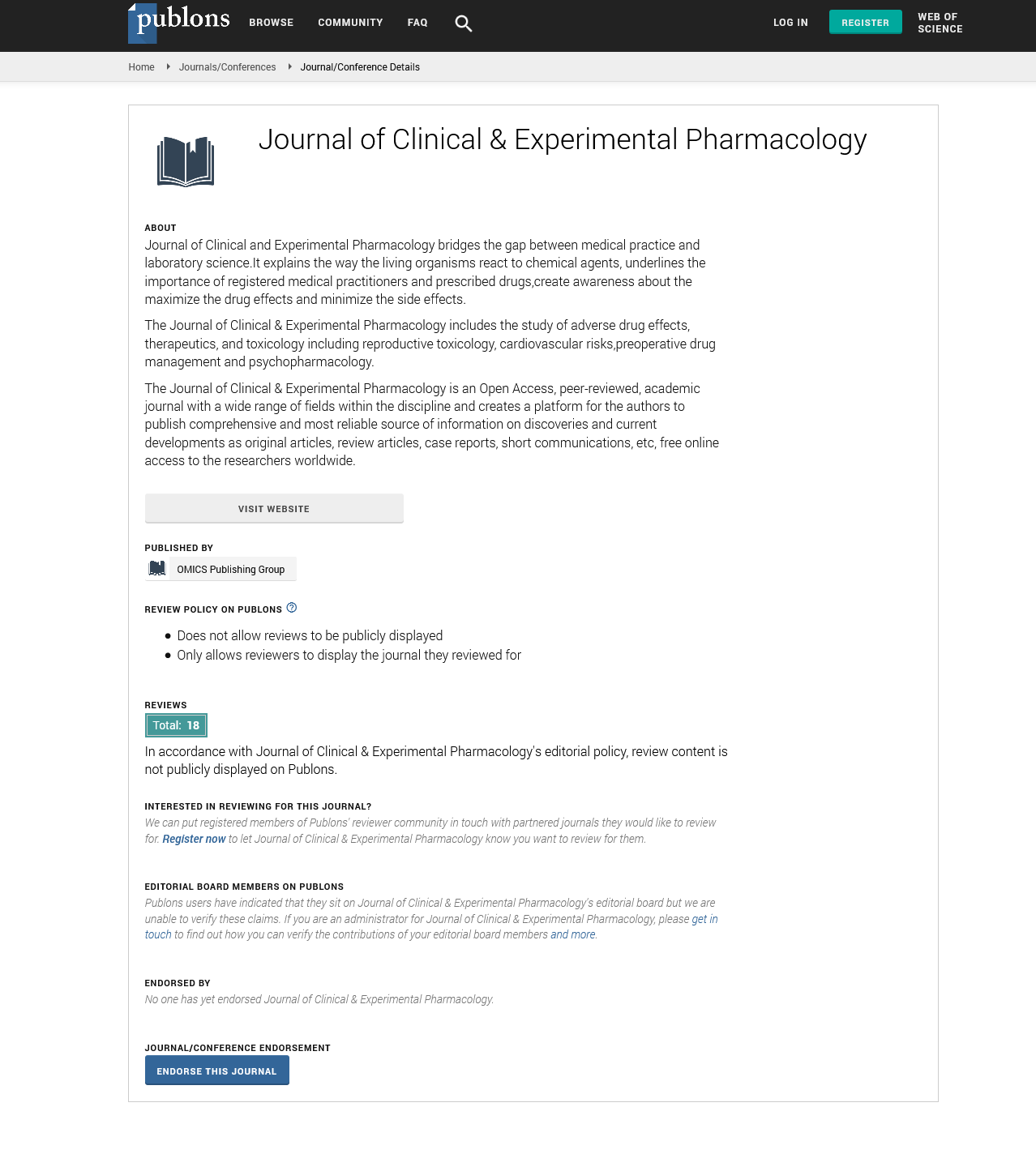Indexed In
- Open J Gate
- Genamics JournalSeek
- China National Knowledge Infrastructure (CNKI)
- Ulrich's Periodicals Directory
- RefSeek
- Hamdard University
- EBSCO A-Z
- OCLC- WorldCat
- Publons
- Google Scholar
Useful Links
Share This Page
Journal Flyer

Open Access Journals
- Agri and Aquaculture
- Biochemistry
- Bioinformatics & Systems Biology
- Business & Management
- Chemistry
- Clinical Sciences
- Engineering
- Food & Nutrition
- General Science
- Genetics & Molecular Biology
- Immunology & Microbiology
- Medical Sciences
- Neuroscience & Psychology
- Nursing & Health Care
- Pharmaceutical Sciences
Distribution and biliary excretion of tetrodotoxin in the marine pufferfish Takifugu rubripes juvenile after an intramuscular administration
World Congress on Pharmacology
July 20-22, 2015 Brisbane, Australia
Takuya Matsumoto
Scientific Tracks Abstracts: Clin Exp Pharmacol
Abstract:
Pufferfish, the family Tetraodontidae, generally contain a potent neurotoxin, tetrodotoxin (TTX) that selectively binds to voltage-gated sodium channels in muscle and nerve tissues. Pufferfish mainly acquire the toxin through the food chain associated with biological concentration. In wild adult pufferfish, TTX is mainly localized in high levels in the liver and ovary, although the distribution and accumulation of TTX is species-specific. We previously examined the pharmacokinetics of TTX in pufferfish Takifugu rubripes adults following single intravenous and gastrointestinal administration, and observed that TTX was well absorbed into the systemic circulation from the gastrointestinal tract and transferred into the liver. In this study, we investigated the tissue distribution and biliary excretion of TTX in pufferfish T. rubripes juveniles (6-month-old) for 24 h after intramuscular administration. The blood concentration of TTX was 0.53±0.15 mg/mL at 1 h, and gradually decreased to 0.05±0.01 mg/mL at 24 h after administration. The TTX concentration in the liver declined from 1.59±0.10 mg/g at 1 h to 0.48±0.21 mg/g at 24 h. In contrast, the concentration of TTX in the gallbladder bile remarkably increased from 0.08±0.03 mg/ mL at 1 h to 0.39±0.05 mg/mL at 8 h and remained at almost the same level at 24 h. These findings indicate that juveniles may have less ability to accumulate TTX inliver or greater ability to excrete the toxin from liver, while adults have greater ability to accumulate more TTX in liver or less ability to excrete TTX.
Biography :
Takuya Matsumoto has completed his PhD from Tokyo University of Marine Science and Technology (TUMSAT) in 2008 and Postdoctoral studies from TUMSAT in 2010 and Graduate School of Agricultural and Life Sciences, The University of Tokyo in 2012. He is a Professor at Faculty of Life and Environmental Sciences, Prefectural University of Hiroshima. He has conducted a series of studies about pharmacokinetics of marine pufferfish toxin, and published more than 17 papers in journals related to the field of toxinology and marine biochemistry.

